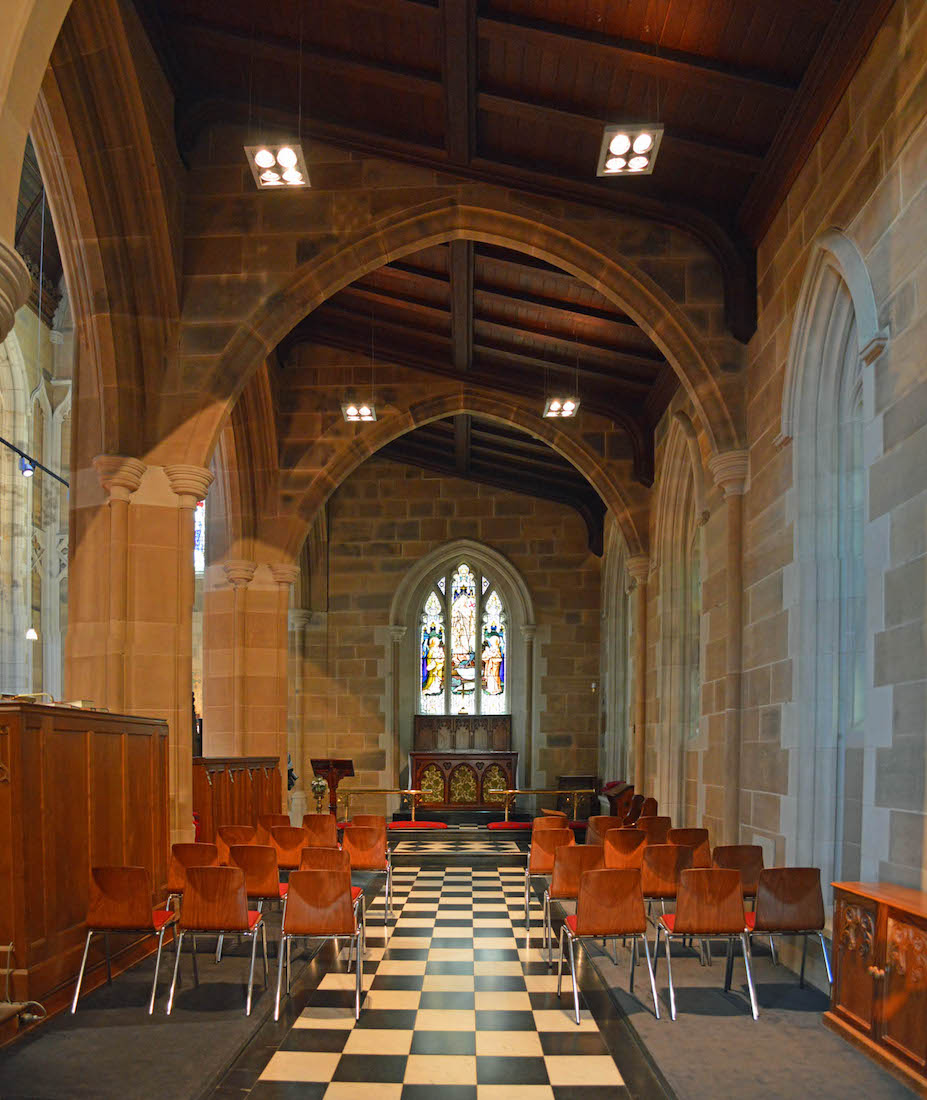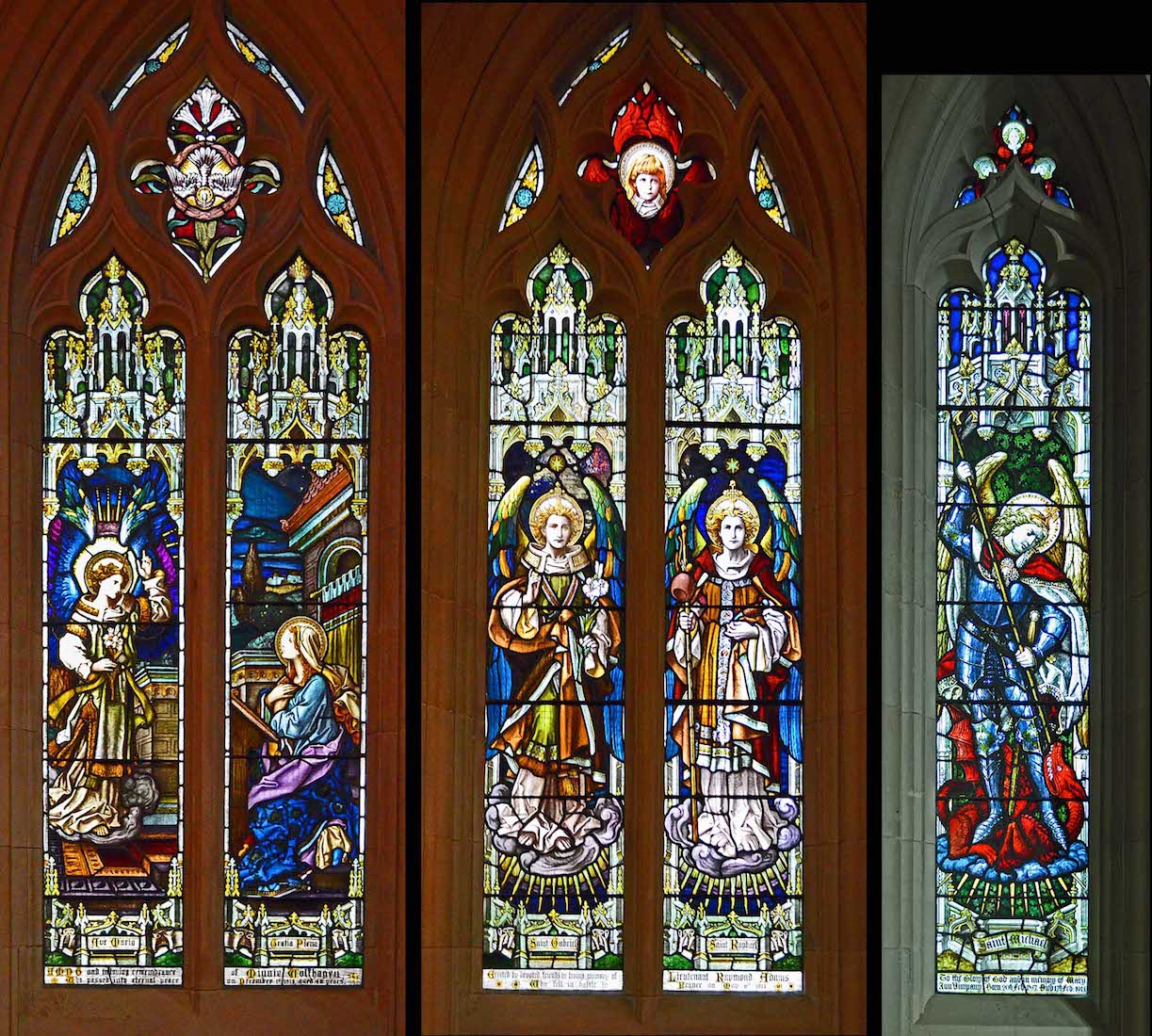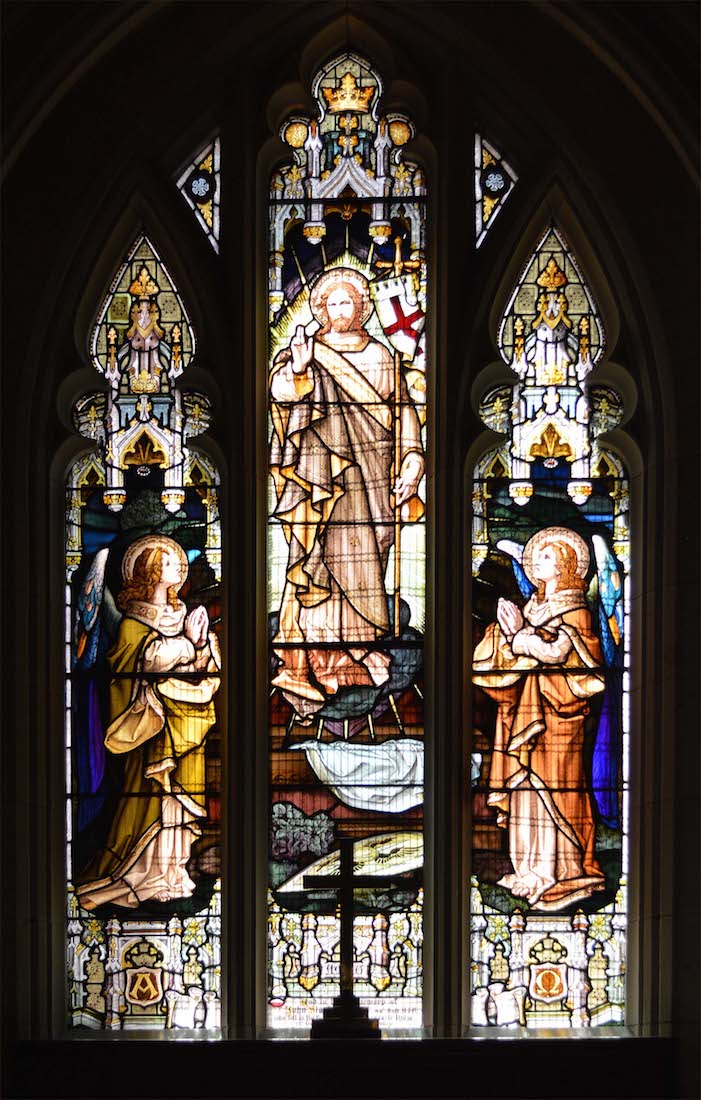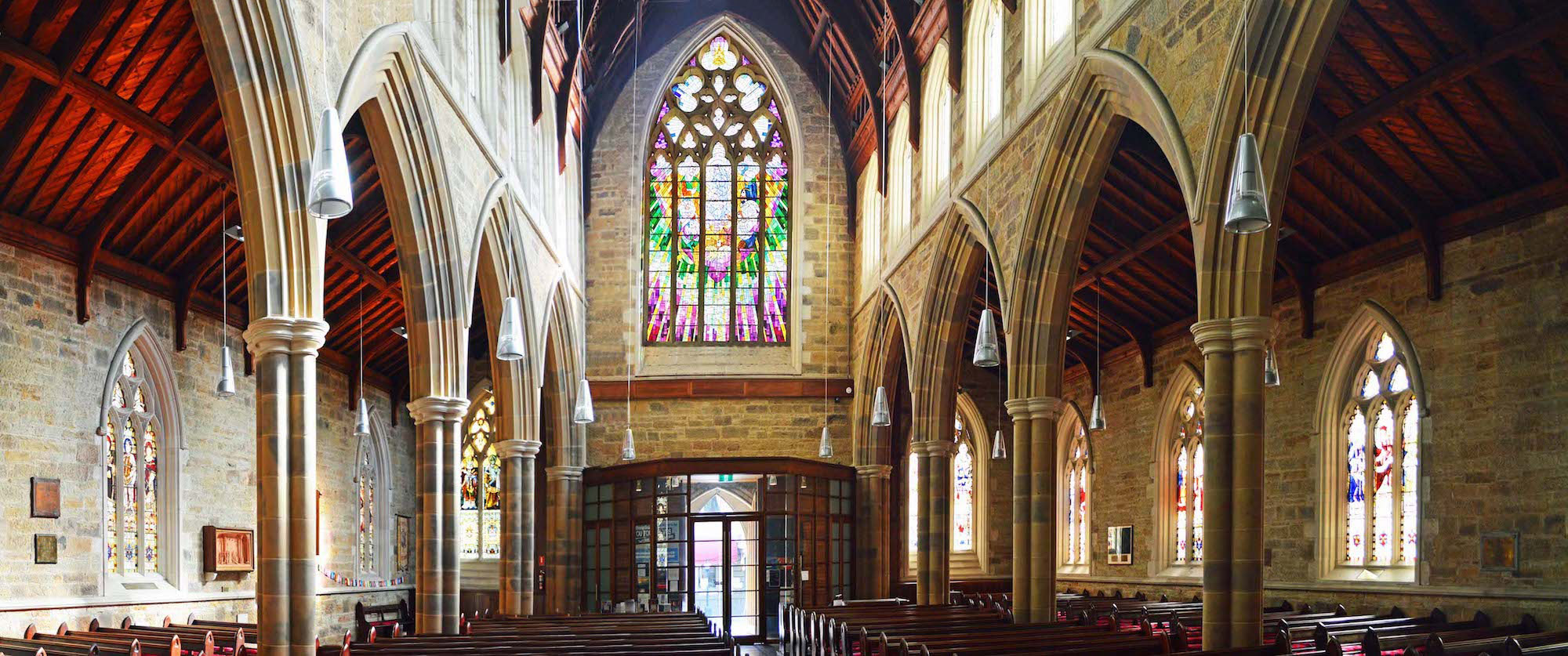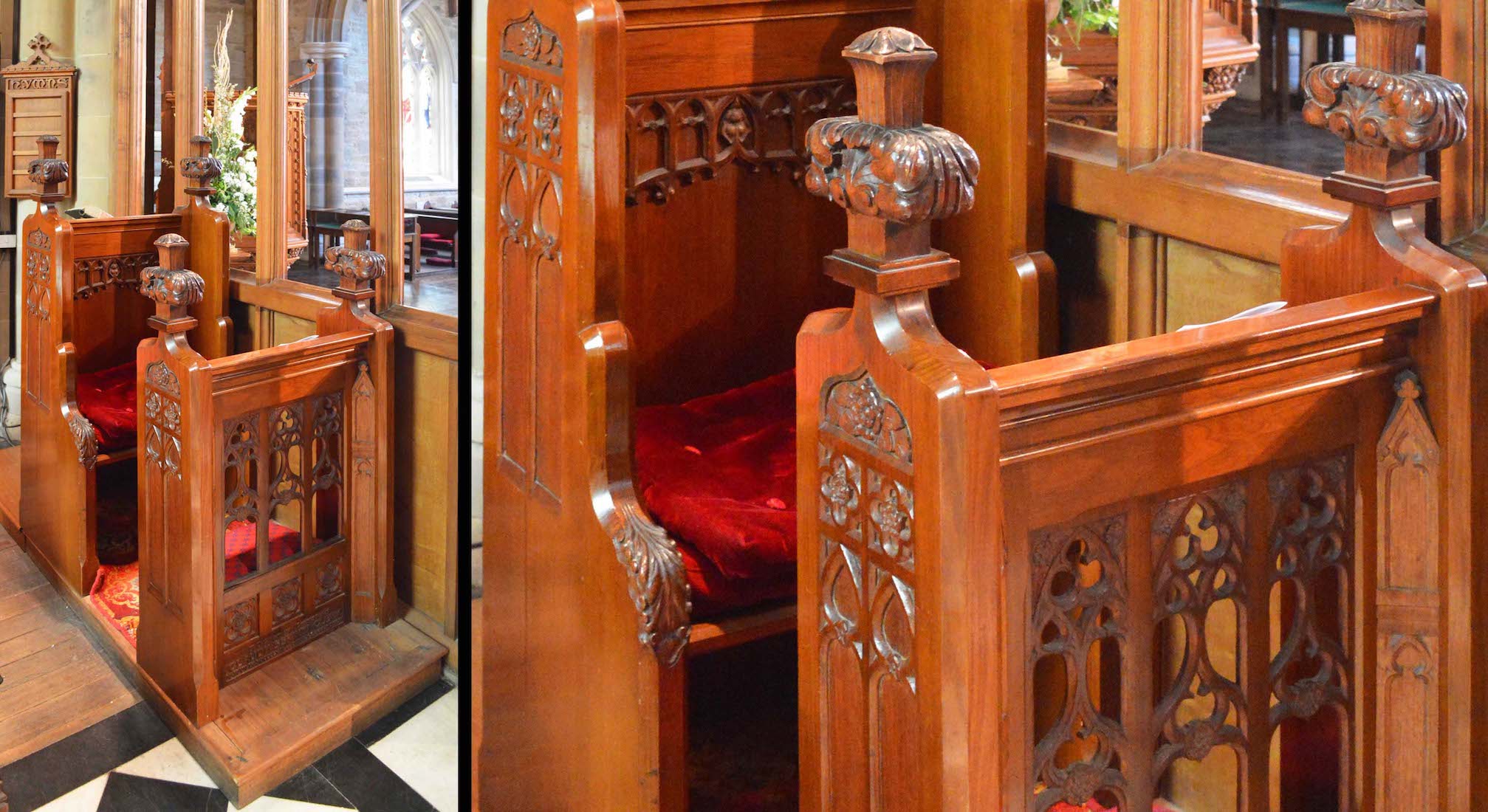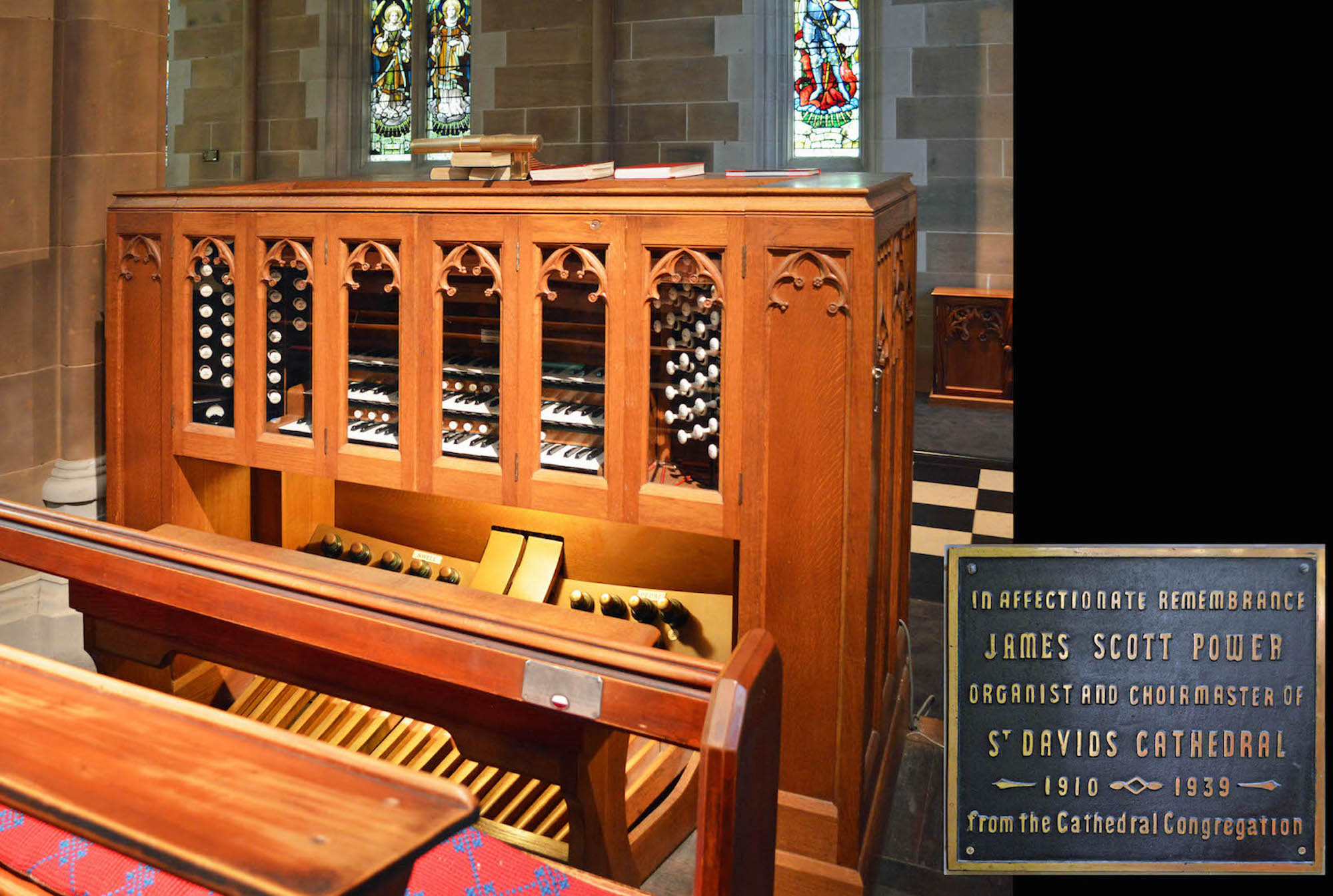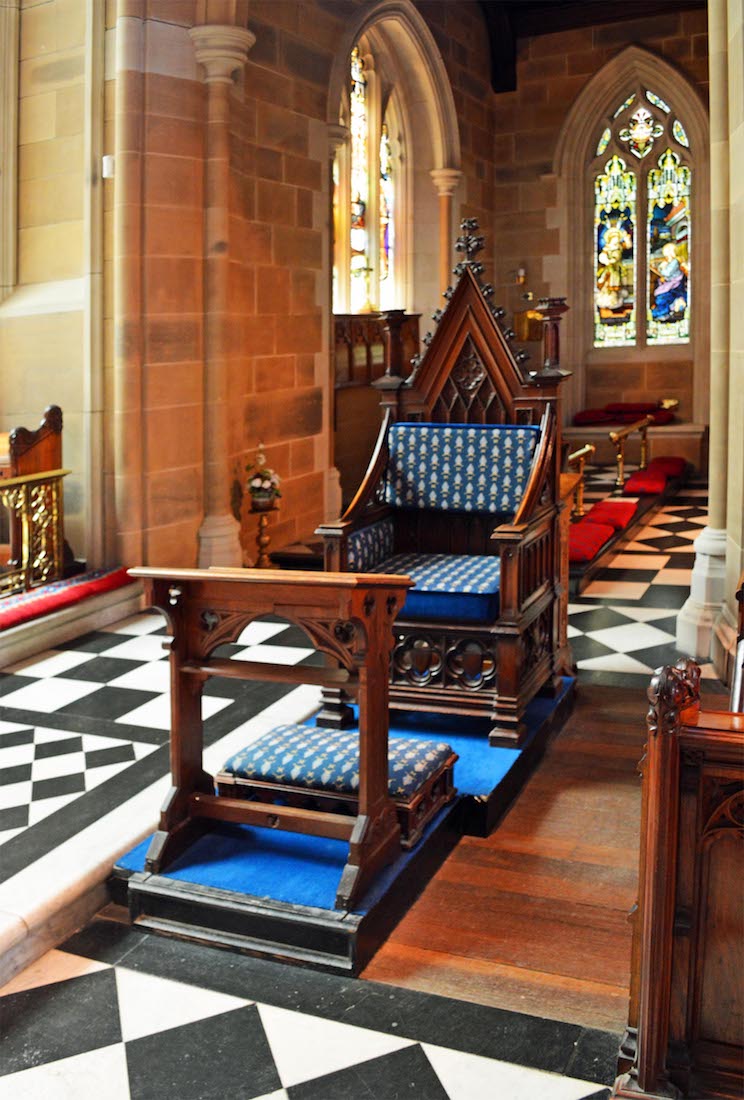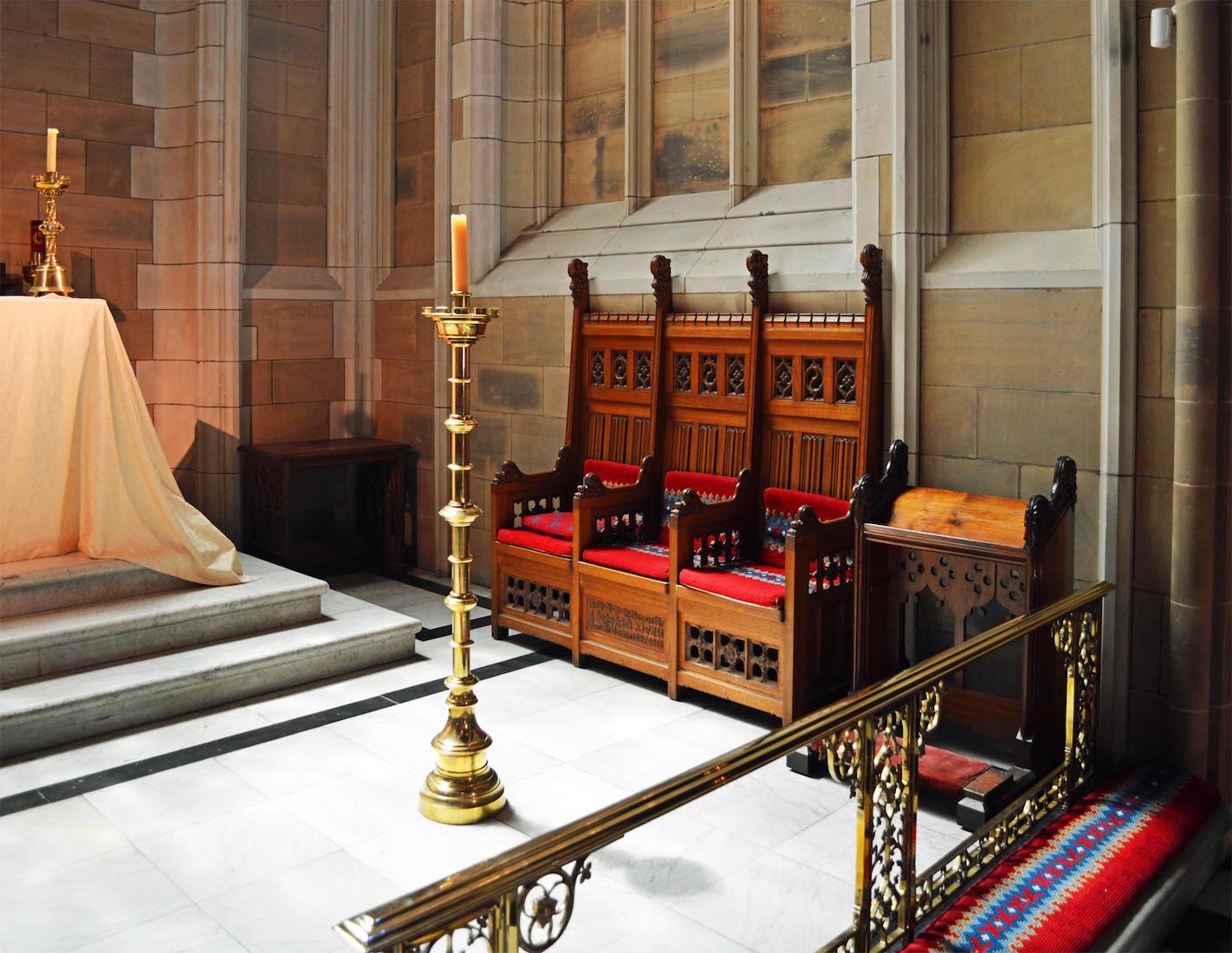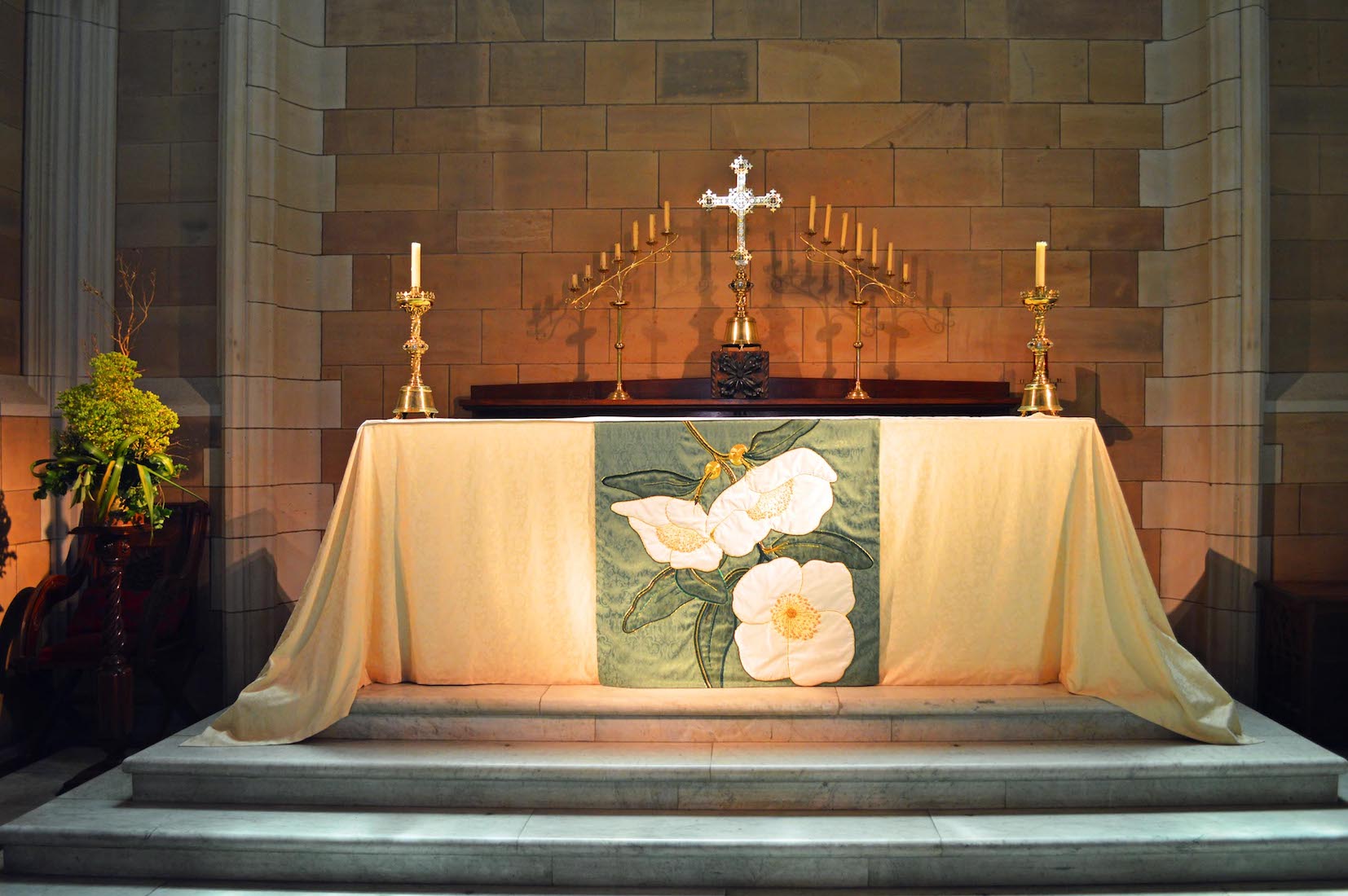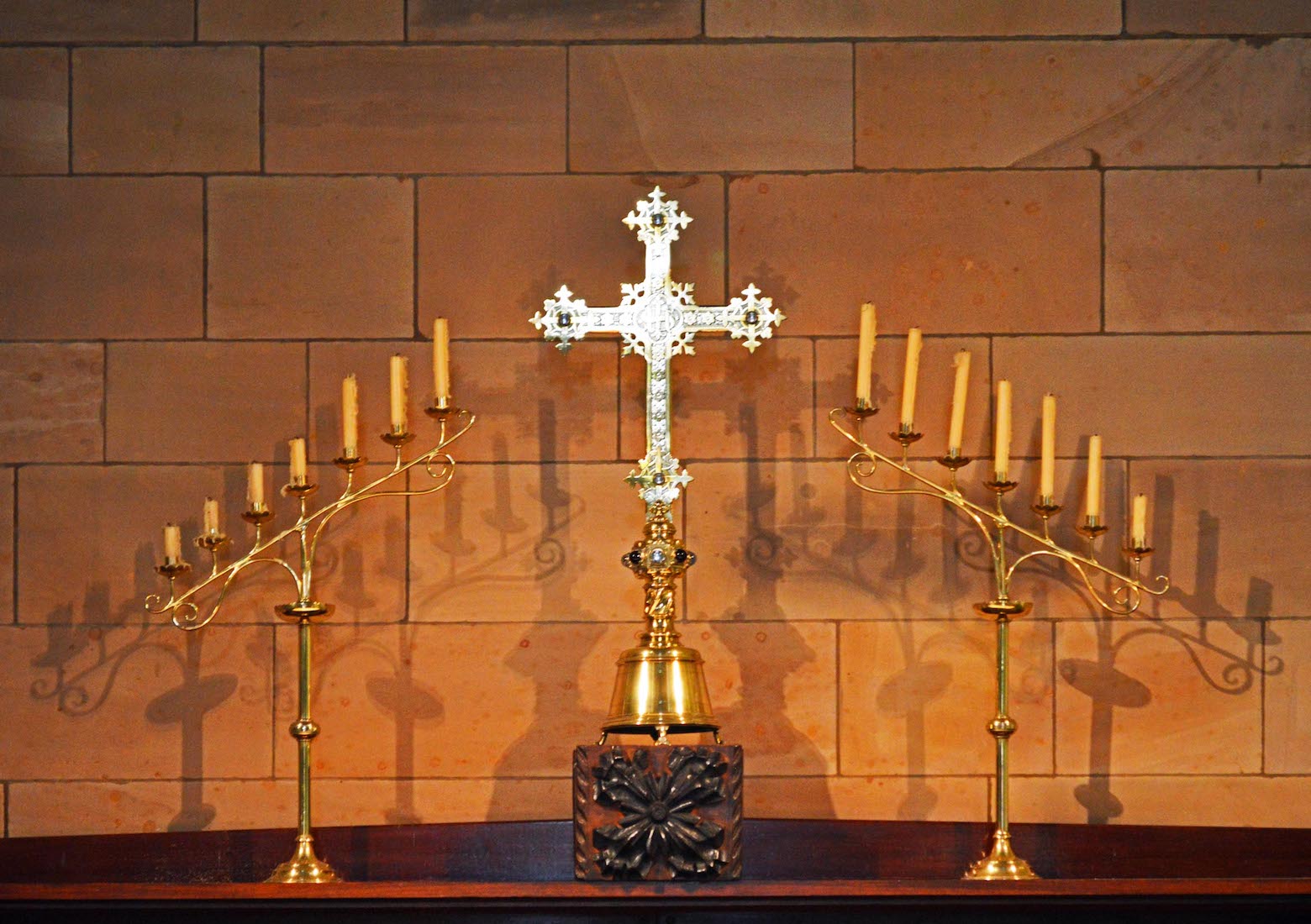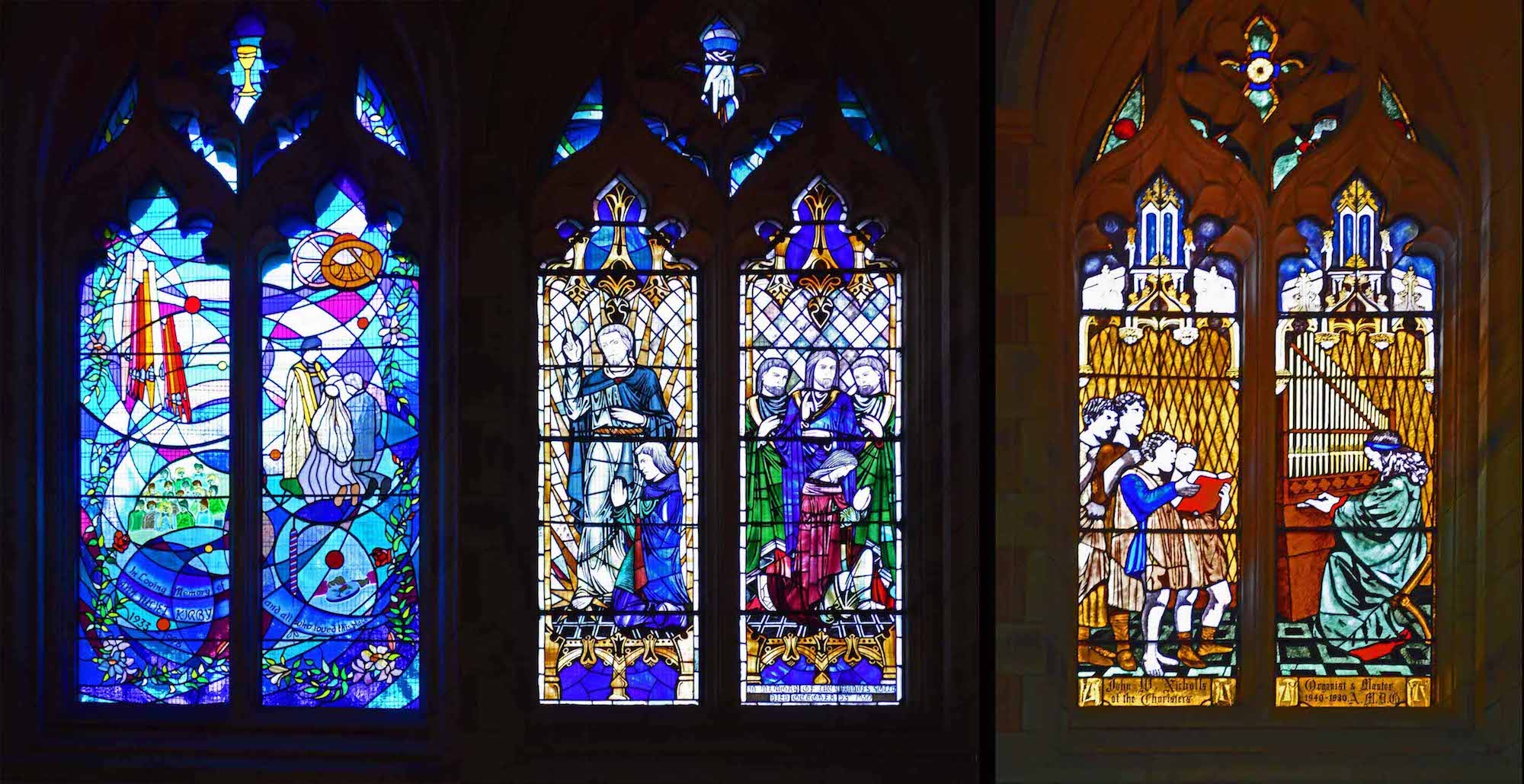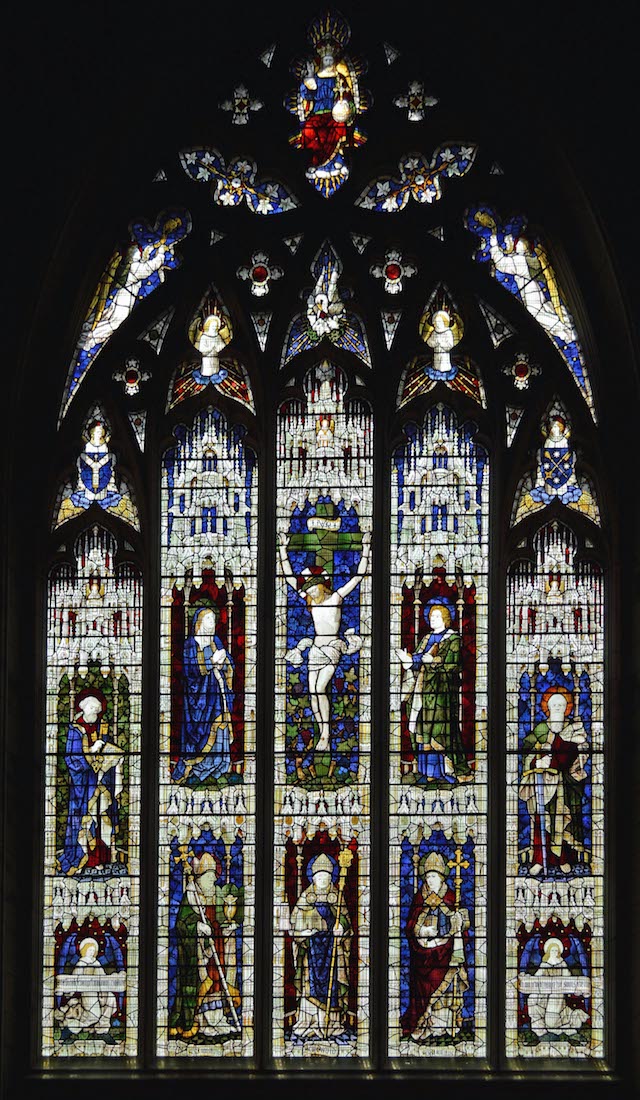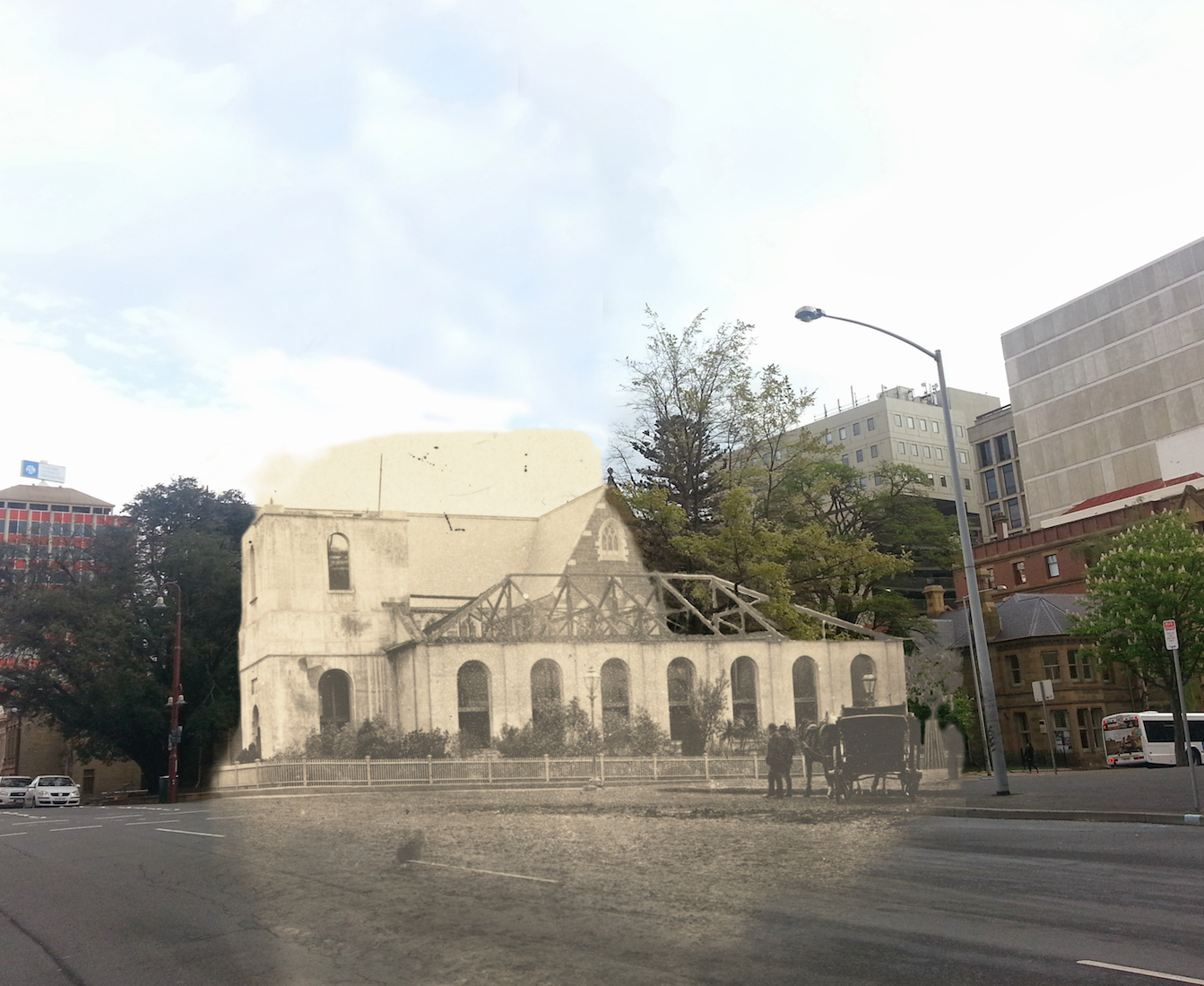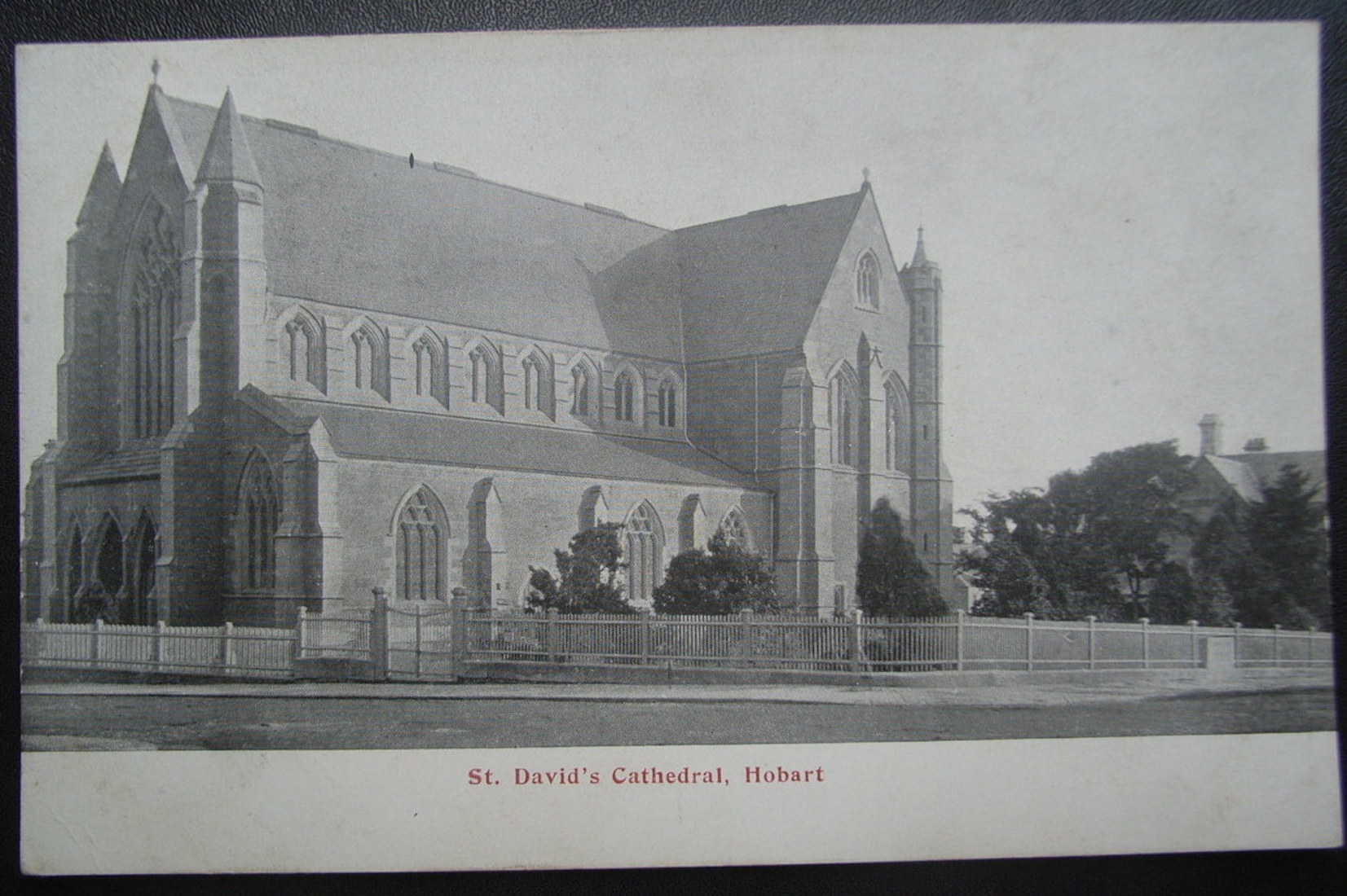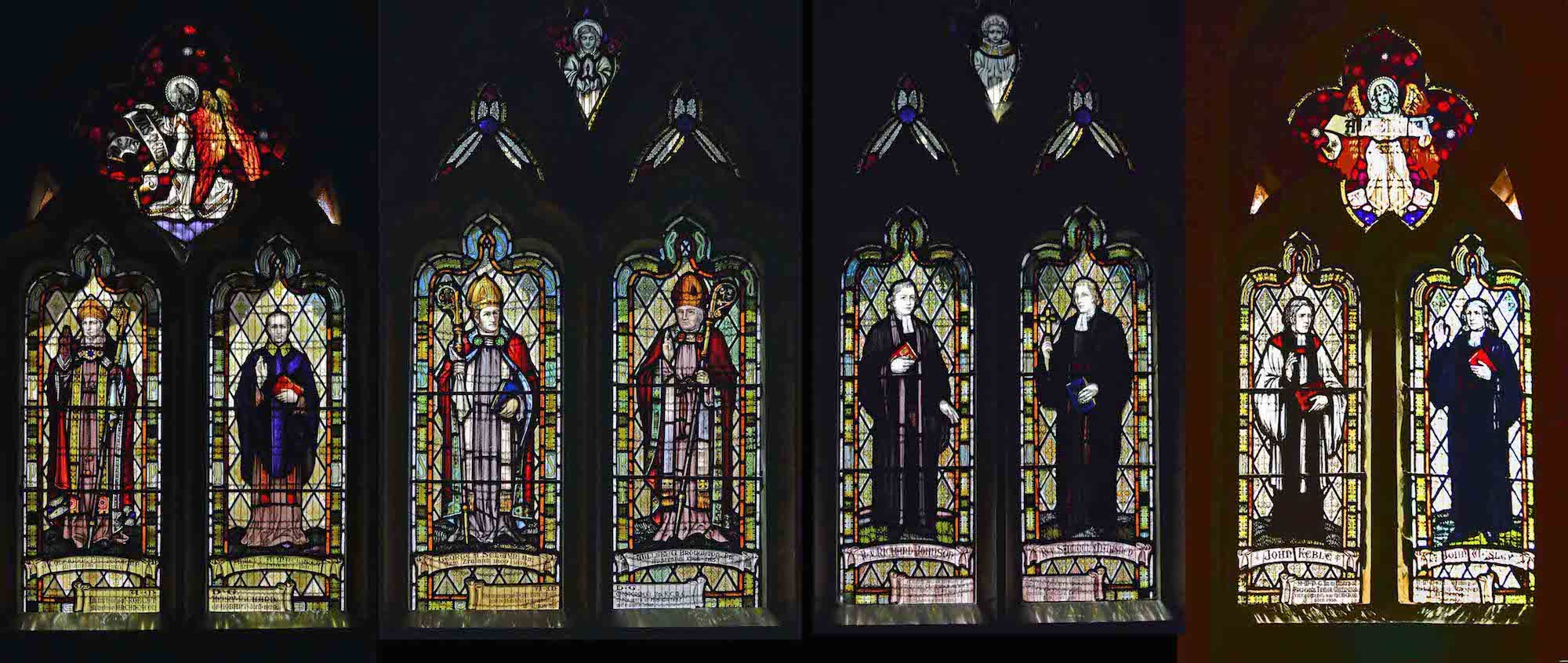
The East windows show from left: Bp J. Coleridge Patteson, Albert A. Maclaren; Bp George A. Selwyn, Bp William G. Broughton; Rev Richard Johnson, Rev Samuel Marsden (first chaplains to the penal colony of NSW); John Keble, John Wesley. PLAN
62. TO THE NIXON CHAPEL
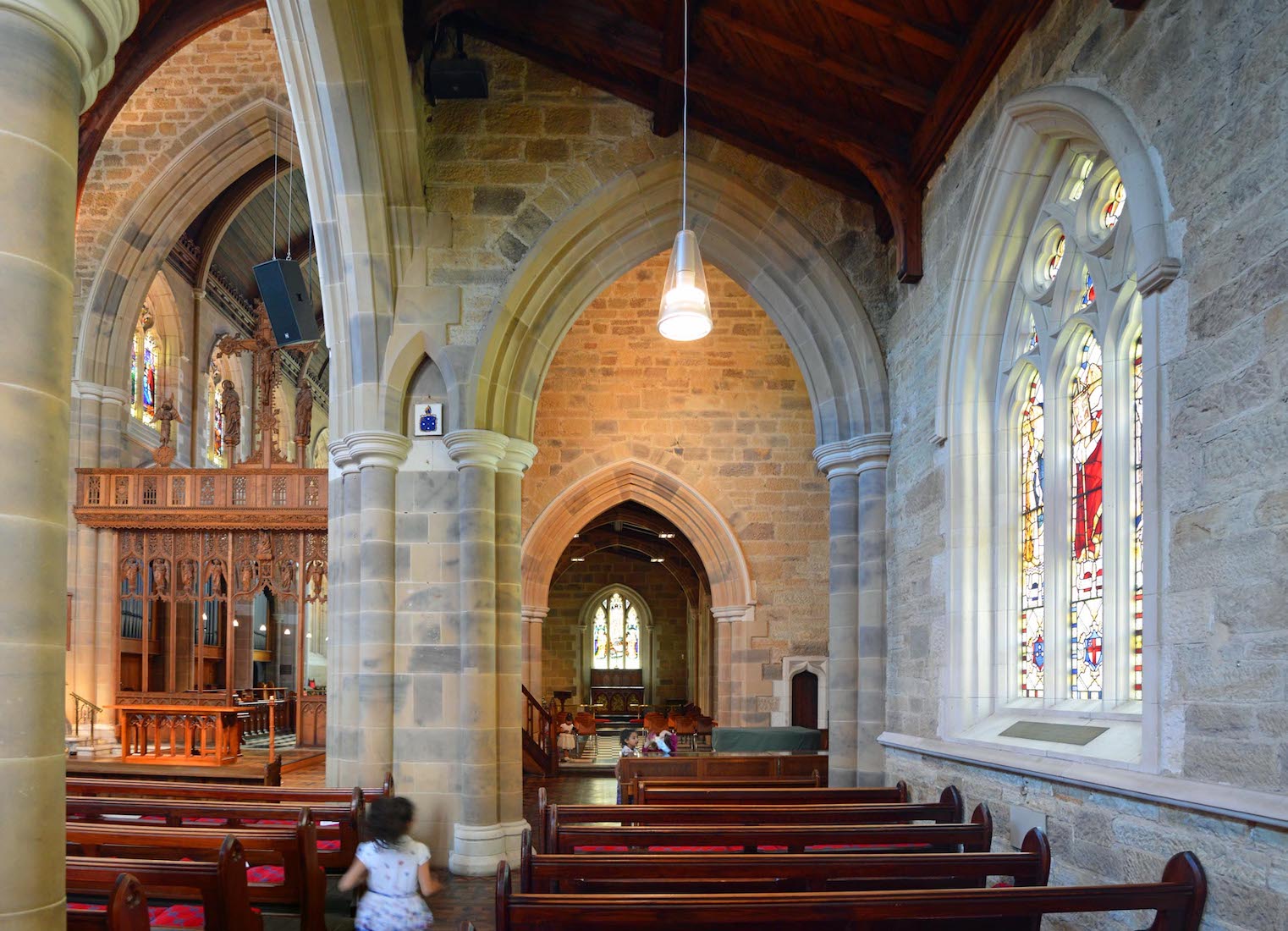
We leave the Cloister link, and move back through the nave towards the Nixon Chapel. Notice the crest at the top of the column at left.
64. CHAPEL WINDOWS
Curiously, the chapel windows comprise two double lancets and a single lancet. From left they show: the Annunciation to Mary, St Gabriel (‘hero of God’) and St Raphael (‘God heals’), and St Michael slaying the dragon (Rev 12:7). The Annunciation window is of very high quality, and judged by some as the most beautiful in the Cathedral.
65. CHAPEL ALTAR
The Nixon Chapel has its own altar, and is used regularly for smaller Cathedral gatherings.
66. CHAPEL EAST WINDOW
This window depicting the Ascended Christ is of excellent craftsmanship and quality, and is one of the best in the Cathedral.
67. NAVE WEST VIEW
Leaving the Nixon Chapel we return to the crossing for this view of the Great West Window.
68. NORTH CHANCEL
On the North side of the chancel, behind the choir stalls, there is an array of organ pipes. The first Cathedral organ was moved to the historic church of St Luke Richmond when a larger instrument was needed. The new Cathedral organ, two manual with pedals, was built in London and installed in 1874. It was moved to its present position in 1958.
69. DEAN’S CHAIR
The Dean’s chair sits on the South side of the chancel, and is finely carved from Tasmanian oak. Along with the choir stalls, it was installed in the 1920s.
70. ORGAN CONSOLE
The organ console is just behind the Dean’s chair. The organ was substantially rebuilt in 1909 with a third manual added in 1916. It was converted to electro-pneumatic action in 1958. Recent renovations have made it one of the finest in the southern hemisphere.
71. CATHEDRA
The Bishop’s throne or ‘cathedra’ sits further back, and we can see through to the Nixon Chapel. St David’s is a cathedral because the Bishop‘s throne is sited here. This cathedra was hand carved in England and brought to Hobart for Bishop Nixon’s enthronement in 1843. Since then, ten bishops have been enthroned.
73. SEDILIA
At the side of the sanctuary is a set of three seats used by the servers. They are often called by their Latin name, ‘sedilia’, although strictly, the original sedilia were made of stone.
74. HIGH ALTAR
The altar in a Cathedral is a symbolic reminder of the sacrificial death of Christ on the cross. Most cathedrals have a range of altar cloths which are chosen to represent different seasons within the church year.
75. CROSS AND CANDELABRA
This ornate cross and matching pair of candelabra stand on a shelf behind the high altar. The cross of course is symbolic of the death of Christ, and has come to stand for Christian belief. Candles remind us of Christ being the Light of the world.
76. CHANCEL NORTH CLERESTORY WINDOWS
There are three clerestory windows on either side of the chancel. These three show, from left: Jesus healing the crowds, the Day of Pentecost, and the Baptism of Jesus by John the Baptist.
77. CHANCEL SOUTH CLERESTORY WINDOWS
These three windows are more modern – the window at left carries the date 1996, has a musical theme, and is in memory of all who love St David’s. The window at right shows organist and choristers. The central window speaks to me of ministry and dedication.
78. GREAT EAST WINDOW
The theme of this window is the Crucifixion. There are many interesting features in this window: for example, the characters surrounding the Cross, the item carried by St David, the pelican feeding its young, the Coat of Arms of the Tasmanian Diocese. This completes our tour of St David’s Cathedral.
79. 1875 DEMOLISHING THE OLD
On 8 January 1868 the foundation stone of the present St David’s Cathedral (the third St David’s Church) was laid by HRH Prince Alfred the Duke of Edinburgh. On 3 February 1874 the nave of the new St David’s Cathedral was consecrated by Bishop Bromby. A procession took place from the old St David’s which was still standing to the west door of the new Cathedral. In September 1874 the old St David’s Cathedral was pulled down.
80. EARLY DAYS
On 3 February 1891 the foundation stone of the Chancel was laid by Sir Robert Hamilton KCB Governor of Tasmania in the presence of Bishop Henry Hutchinson Montgomery (father of Field Marshall Bernard Law Montgomery of Alamein). On 12 January 1892 the foundation stone of the Cathedral tower was laid by His Grace the Primate of Australia with Bishop Montgomery conducting the service in the year of the 50th Anniversary of the Founding of the See and the 250th of the discovery of the Island by Abel Tasman. On 18 January 1894 the Cathedral Chancel and the Nixon Chapel were consecrated by Bishop Montgomery. This coincided with a Church Congress of Australia and New Zealand.


